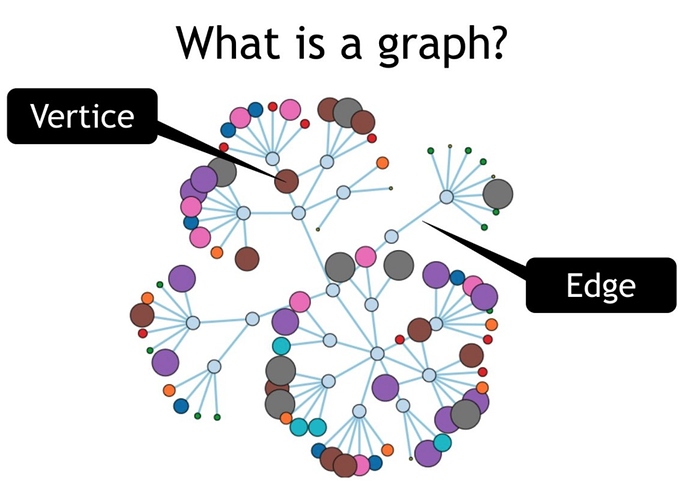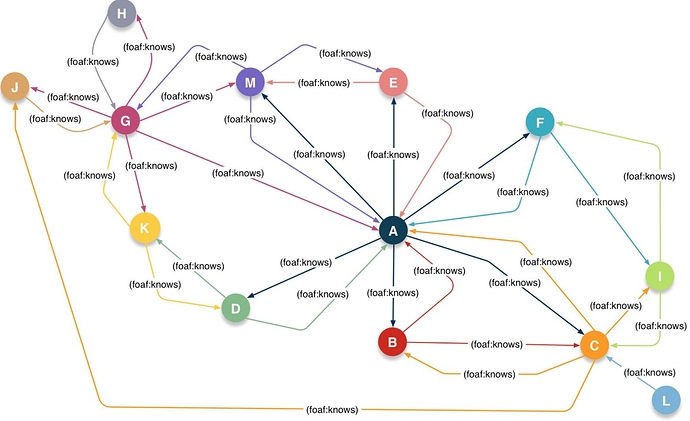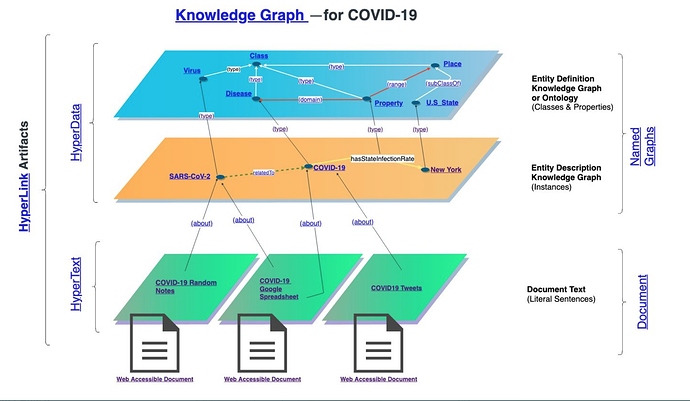A lot of conversations today about Structured Data, Data Integration, Analytics, and Management ultimately lead to the subject of Graphs. Unfortunately, most of these conversations are actually about the Network sub-category of Graphs rather than the more generic category itself – thereby leading to confusion that manifests as problematic communications and narratives.
Every Network is a Graph. Every Graph isn’t a Network!
Why?
A Network is a collection of Relatives, i.e., all node connections (edges, relationship types, or relations) are transitive in nature. Fundamentally, transitivity lets you perform Network Analytics using common algorithms that address Centrality, Degrees, Closeness, Betweeness, Neighborhoods, etc.
Network (Sub-Category of Graph) Illustrated
RDF demonstrates understanding of the insight above via use of Ontology; i.e., through structured terminology definitions, a connection can be designated as being transitive; and courtesy of Linked Data principles, both humans and machines are able to look-up the definition of the nature of a given connection as defined in an Ontology.
RDF Graph (Heterogeneous Connections/Relations) Illustrated
Labelled Property Graph (LPG) vs RDF Graph Narratives
Labeled Property Graph (LPG) narratives are actually about Network Analytics applied to a Network derived from a dataset. RDF narratives are deeper; e.g., each Knowledge Graph comprises a variety of connection types.
RDF enables world-view descriptions on any subject based on a heterogeneous graph (rather than a homogeneous network), and if deployed using Linked Data principles the very nature of these graphs becomes both accessible and readable by both a human and a piece of RDF-software via look-ups (i.e., hyperlink de-reference).
RDF’s descriptive richness also covers a powerful foundation that accommodates reasoning and inferences over a variety of dynamically discovered networks that are exploitable using SQL and/or SPARQL when using our powerful mutli-model DBMS platform, Virtuoso.
Related
- Graph Definition from the OpenLink Technical Terminology Glossary
- Knowledge Graph
- Original LinkedIn Post
- Graph Analytics using Virtuoso’s SPARQL-BI extensions to SPARQL
- Graph Analytics using Virtuoso’s Transitivity Extensions to SQL


